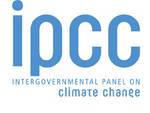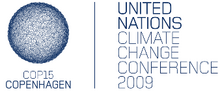 |
|
|
Another agreement initiated in 1987 and regularly updated at UNFCC annual meetings is the Montreal Protocol, which aims to stop the use of CFCs and find suitable ‘environmentally’ friendly substitutes. The then general secretary of the UN Kofi Annan described this agreement as "perhaps the single most successful international agreement to date". IPCC - 2007
|
 |
In 2007, the  Intergovernmental Panel on Climate Change (IPCC) fourth report made convincing reading. Politicians met at the Washington summit in February '07. Representatives from the G8 countries, Brazil, China, India, Mexico and South Africa agreed that developing countries would also have to meet targets for cutting greenhouse gas emissions. This informal meeting also agreed that a global market should be formed to cap and
Intergovernmental Panel on Climate Change (IPCC) fourth report made convincing reading. Politicians met at the Washington summit in February '07. Representatives from the G8 countries, Brazil, China, India, Mexico and South Africa agreed that developing countries would also have to meet targets for cutting greenhouse gas emissions. This informal meeting also agreed that a global market should be formed to cap and  trade carbon dioxide emissions.
trade carbon dioxide emissions.
Copenhagen 2009
Copenhagen 2009
 |
In December 2009, despite updated scientific summaries suggesting climate change could be more extreme than thought in 2007, the United Nations Climate Change Conference (UNCCC) ended in failure. Violent clashes between police and protestors outside mirrored verbal clashes between rich and poor countries inside over who should take responsibility for solving climate change. The result was a weak agreement, which scientists say will not cut carbon emissions nearly enough.
The plan had been to create a treaty, binding all countries to cut CO2 emissions quickly. But some rich countries were not yet willing to make cuts as it would threaten their wealth. Other poor countries were unwilling stop burning fossil fuels as to do so would slow up their aims to climb out of poverty. The meeting did however show how complicated it is to get 192 countries to agree and how dependent on oil the world economy has become.
The next UNCCC meeting is due in Novenber 2010 in Mexico. It is likely that there will be intense negotiations between countries this year.
 Who's releasing the most carbon into the atmosphere?
Who's releasing the most carbon into the atmosphere?
 Check out this map. Look at the amount of CO2 produced per person in different countries. Does this change how you understand the totals for the countries concerned? Do you think that this knowledge affects who you think is responsible for action to deal with climate change?
Check out this map. Look at the amount of CO2 produced per person in different countries. Does this change how you understand the totals for the countries concerned? Do you think that this knowledge affects who you think is responsible for action to deal with climate change?
The Precautionary Principle
At the Rio Earth Summit in 1992 the world’s governments signed up to the United Nations Framework Convention on Climate Change. This was based on the precautionary principle - the consquences of climate change are so dire that action needs to be taken even in the light of scientific uncertainties about the evidence for climate change and its impacts. It was decided to take a precautionary approach and to aim to reduce global greenhouse gas emissions by 60% or more as soon as possible.



 The first major international agreement, signed by 154 countries at the
The first major international agreement, signed by 154 countries at the  Rio Earth Summit
Rio Earth Summit
 Big Projects
Big Projects
What's your opinion?
Average rating




Not yet rated